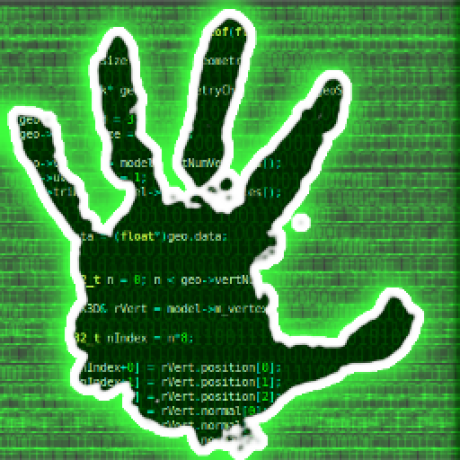As much as I loathe m$, the one thing they got right was forcing casual users (windows home) to install security updates as top priority, whether they like it or not. I know we all hate on windows, and rightly so, but that policy does nullify this particular vector and that is great for the consumer-level users.
(… for the sake of argument lets just pretend windows doesnt have 10,000 other vulns the malware devs can just exploit instead)
Also keep in mind that the main reason Windows is targeted for so many exploits is because of the consumer market share. If Linux consumer market share goes up, so will general malware targeting it. We already saw it happen when OSX share increased and Apple had to abandon the whole “Macs don’t get viruses” schtick.
We already saw it happen when OSX share increased and Apple had to abandon the whole “Macs don’t get viruses” schtick.
It’s kinda crazy that Apple got away with spinning “Our products don’t sell well enough for this to be a problem” into a marketing point for as long as they did.
I assume they said it was due to other reasons than obscurity, although we know better.
It was due to other reasons, too.
One of the main malware vectors back then was Internet Explorer (and specifically ActiveX), Outlook Express, and MS Office macros. That’s not just a matter of obscurity; it’s because Microsoft specifically wrote very shitty software with no regard for security. Netscape was not nearly as exploited as IE even when it was the leading browser.
Apple always does that. After iAds failed, they pivoted into advertising a privacy focused ad campaign to counter Google. Had iAds succeeded, they’d be perfectly fine into getting into that business.
How did it take 6 yrs to fail tho
Linux has had a long history of worms and viruses, fortunately (sorta) thanks to its server legacy. Dumb and lazy server admins have given it pretty good ‘secure by default’ behaviours and cultures.
Desktop users though: whole different set of challenges.
I mean, I don’t think I would mind forced updates if they didn’t take so damned long and fail half the time. And then, just when you think you’ve finished installing all updates, you reboot and there’s more updates! Why can’t they just install it all at once?
Plus, after each major update, Microsoft wastes your time by advertising to you about Edge, Office 365, and OneDrive before they even let you get back into the desktop.
Forced security updates is addressing a symptom but not addressing the root cause, which is that the Windows update process is just painful for a myriad of reasons. In Linux, I run one command, wait 5 minutes, reboot, and I am back to work.
I legitimately haven’t had a windows update take more than 5 minutes during the reboot phase for years. Most of the time it’s about 30 seconds.
Same here. I don’t know what people that have all these issues are doing, but none of my systems or those of my friends and family have these issues.
We also aren’t fucking around with the various random guides to “debloat”, mess with telemetry, eetc. however, so I can only assume that it’s things in those guides and programs that cause issues. For the people with enough technical knowledge to look for the guides but not enough knowledge to know what they do, or care enough to find out.
The longest update I’ve had took about 15 minutes. My system never restarts in the middle of use to install updates, with the only exception when I was actively hitting the delay button for several days to see if I could force it to. And it finally did, after several days of it asking and me telling it no, and it still gave me a countdown to save my work. It did not randomly restart while in use without warning.
Programs like candy crush, that had install links that were preinstalled (it’s not the full game, just a link to install it) I uninstalled like any regular app and they never returned. I use my system like a regular user, not mucking about blindly in the registry, and never run into these weird issues people complain about. I block telemetry I don’t want at the network level. The OS never knows and I don’t have to blindly trust random guides telling me to mess with things that aren’t intended to be messed with. The OS seems to work just fine with telemetry connections working but failing to connect, as would be expected and tested by MS. People messing with those things manually is not something they’d likely spend much, if any, time on testing.
From my experience, many so-called “power user” complaints are caused by the user doing things they don’t understand, outside of what would be expected and tested.
The problem with windows is it’s one time it’s installing ads that you have to disable for apps, a different time it’s installing ads by re-enabling Cortana and forcing local searches over the web, a different time it’s adding ads by installing a bullshit weather app, a different time it’s adding ads with a bullshit news app, a different time it’s reverting all your settings limiting
spywaretelemetry, a different time…It’s not one thing repeatedly. But it’s constantly whack a mole to figure out how to disable the newest hostile anti-feature it installed without your consent.
Yeah, I have never had Windows 11 undo anything I’ve changed or reinstall anything I have uninstalled.
You all are doing something that is causing these issues.
Every single one of those things happened on Windows 10. No, I absolutely did not do anything to instigate it.
Microsoft is malicious and has an extremely long history of being shitbags adding aggressively invasive features for the sole purpose of spyware and advertising.
Microsoft being shitbags aside… no argument there.
You say you didn’t do anything… but if not everyone has the issue… then something is being done to cause it, whether you want to admit it or not.
It’s people who had a single bad experience 15-20 years ago, or heard second hand of such issues. Or if they’ve experienced it recently then they were probably running a very slow hard drive rather than an ssd.
My friend needed to reinstall Windows because it broke after the update, and he is using a ~5-year old PC with an SSD. Windows can sometimes break, even if you are not messing with debloating scripts and etc. It was and it will always be the case. But Linux can unexpectedly break itself too. I suppose it can be the case with MacOS too.
The more important thing for me is the possible options for troubleshooting and, if the situation is really bad, how fast can you reinstall the system to have a fully operational PC again. And in that case, Linux wins, because even if it is harder to troubleshoot, it’s very often possible to just insert some commands, where on Windows, most of the time, the best solution is to reinstall the whole OS. And even reinstallation is faster on Linux. It’s even faster if you have /home on a separate partition.
The longest update I’ve had took about 15 minutes.
Asking someone to take 15 minutes out of their work time to do updates is exactly why people DON’T want to update. Even 15 minutes is insane. That’s a whole standup meeting, that’s a whole presentation, that’s work disruption for a bunch of people.
Linux updates in a minute. That’s the kind of performance we SHOULD be expecting in the modern age and that Microsoft refuses to deliver.
So don’t update in the middle of your work day. It literally pops up in the corner saying it needs a restart after installing what it can while the system is running, and you can delay it. It only forces a restart when you’ve delayed it several times already over multiple days.
Most updates on my system are handled overnight, outside the active hours I’ve set in the settings. So it doesn’t affect my usage at all. I get on in the morning with a freshly updated system, and if I left apps open overnight, they are reopened where I left off. I only see updates when I tell it to update manually.
I can see you don’t use a laptop.
Most updates on my system are handled overnight, outside the active hours I’ve set in the settings.
Not everyone leaves their computer on draining power. I always put it to sleep when I am not using it. If your argument is that, yeah updates aren’t a problem, you just let your computer run and chew on it for a long time, that’s still a problem…
There is nothing it is “chewing” on for an extended period. I know the updates take at most 15 minutes (on an NvME drive, a SATA M.2 or HDD of course will take longer), because I manually update my systems most of the time. I can see it perform the update right in front of me, most of the time in less than 5 minutes. IF I instead leave it on overnight and it updates and restarts automatically, it is ready to go in the morning where I left off.
Never updating your system manually and never leaving it online outside of your set active hours to perform maintenance when you aren’t actively using it (like installing updates automatically), then getting angry at the system despite you never giving it any downtime to do so, is a YOU problem. Same for the users that delay the restart for multiple days after the updates are installed, and then get surprised when it finally needs to restart like it’s been requesting for 2+ days and being ignored.
I’m sorry but as much as I hate Windows, the only updates that take this long are feature updates that happen twice a year. The vast majority of windows updates take less than a minute for me and don’t require a restart. Even the ones that do finish in under 5 mins
Not true. Cumulative updates also take a while, so do the .NET runtimes. Maybe you have a system with a super fast NVMe drive and a new CPU so you don’t realize it, but other OSes can do much more with much less powerful hardware.
I legitimately haven’t had a windows update take more than 5 minutes during the reboot phase for years.
I wasn’t just talking about the reboot phase…
Downloading gigabytes worth of updates, waiting for them to install, rebooting, see more updates, reboot again takes WAY more than 5 minutes.
But why are you paying attention to a process that a) doesn’t need supervision and b) is done automatically in the background? It’s such a weird thing to complain about.
Not to mention, the vast majority of windows updates are tiny. The only large updates are the yearly major updates. If you’ve got multi gig downloads happening even weekly, you might want to look into what’s wrong with your system.
I am guessing you run your computer all the time instead of putting it to sleep, because it’s never a process that completes transparently in the background for me. It will always build up and then I have to go in and manually trigger it. Or I have to restart because I installed a new application that requires it and then it decides to do them all at once and takes forever.
How long is it on for? Unless you’re turning it on for minutes at a time, I just can’t see how it would never have time to download things in the background.
The only way I can see this really happening is if you’ve a) got obscenely slow internet or b) have all networks listed as metered, which would indeed prevent automatic updates (unless you specify otherwise.)
Might be a good idea to dig into your settings, because the age of needing to babysit windows updates has been gone for years now.
Settings and internet are fine. I dunno what to tell you. Very frequently Windows update shows its head, like I’ll randomly want to restart my computer because I installed a piece of software that required it, and then it kicks off a long round updates when I just want to use my computer.
I still think having to leave it on and let it run in the background is still just addressing the symptoms. An update process should be way faster than that so that such a thing isn’t needed.
How old is your machine? If it’s new enough to run windows 11 then it probably also supports modern standby (aka S0 standby). When plugged in during “sleep” it’s actually on, and should be doing the updates for you.
That said my work laptop only gets used during work hours and it almost always gets it’s updates done while I’m doing stuff throughout the day, and it just needs a quick reboot to finish.
I turn off modern standby. I don’t want my computer turning on when I am not around or when I am asleep. For laptops, modern standby is famous for turning it on while its in your laptop bag, causing overheating and battery drainage.
I think if an update process is annoying enough to require something like Modern Standby in order to be “seamless”, it needs to be improved.
Yep. I have no idea what people complain about with Windows update. Unless you just haven’t used it for 20 or so years.
I love that on my arch setup, I update every single day, usually more than once, and doing so almost never requires me to powercycle my computer.
There is occasional weirdness if you don’t powercycle though. In particular, certain KDE updates will make the desktop misbehave until you reboot. I get where you’re coming from though. Quick updates and the ability to decide when you want to restart means that I have no qualms about updating frequently.
I am on Arch too and
pacman -Syuis usually a snack I have with my morning tea.If the desktop misbehaves, just restart the desktop (log out and in again)?
You can log out, then CTRL + ALT + F1 , log in and run the update command. If there was no kernel update, you don’t have to reboot. If some service got updated restart the service (if that was not done by the updater.) Then you can switch back to the graphical session usually by CTRL + ALT + F7) and log in again.
Problem with this is that it’s really hard to figure out whether some update to some minor library is going to affect an application. Sometimes you don’t even know which applications are using that library.
Reboot? What for, most updates don’t need reboot.
Market share is only any kind of excuse for desktop. Linux dominates servers, routers, and any IOT big enough for a OS. This article is about servers.
For Linux you install unattended upgrades and security updates are done automatically.
Linux has good security updates too. Fedora installs pending updates on restart, and I believe flatpaks are updated automatically in the background.
The virus discussed in the article doesn’t affect Linux PCs, only servers. Windows-style forced reboots wouldn’t make sense in a server environment, and it’s up to the server administrators to implement good update policies for their nodes and containers.
I am aware, it’s just a relevant and closely related observation about consumer OSes. You make good points. A professional server admin > automstic updates (most of the time…)
The problem with Windows Updates is that they force new ‘features’ on you along with the patches.
With Linux you get to choose how bleeding edge you want to be, and can generally avoid the monetization crap.
deleted by creator
There is some enterprise stuff that charges out the ass, IIRC, but I think your comment speaks for itself regarding the home user.
Ubtuntu Desktop definitely tries to push a few things but it’s not even remotely as bad as Windows.
I prefer to live without my software nudging me to do anything.
How would you feel if your hammer stopped working after a while and each new hammer suddenly looked a lot more like a screwdriver because the company wants to sell you screws?
I remembered when OSX didn’t barely had any viruses and malware. Then their user base went up and more malware started to appear.
I’m starting to think virus and malware creators only want to focus on making things that will actually be used. Linux being not one of them.
The magical time where OSX “barely had any viruses and malware” never existed.
Source: Was instructor in a Mac lab for 2 years.
I see. I always thought it was significantly less than PC. Thanks for the info.
While it is true that they were generally less prone to malware, that was not due to inherent security features/improvements over Windows, and was instead mostly function of the relative obscurity of the platform. Can’t get a virus from a downloaded game, because nobody
makesmade games for that platform.In every lab with students, all machines were regularly b0rked and when I say regularly, I mean monthly. Complete re-imaging of 200 machines every weekend ended up becoming the norm because the techs couldn’t deal with the endless destruction.
It was really a matter of the platform having very little saturation in the market, and therefore less malware existed for it. However when in an environment with mostly Macs it was a shit show.
Even if you don’t pretend it’s way down from where it used to be.
That reminds me that I should probably update various things (after 6 months no update)
I don’t want to install security updates. You cannot and will not force me. Case closed.
I have no idea if this is satire or not. Well done.
Did I miss the bit where they said how it was delivered?
Seems it’s exploiting vulnerabilities in some software called “Ivanti Connect Secure VPN”, so unless you’re running that, you’re safe I guess. Says in the past they used vulnerabilities in “Qlik Sense” and Adobe “Magento”. Never heard of any of those, but I guess maybe some businesses use them?
Ivanti Connect Secure VPN
So its spreading via a closed source VPN software. Why should you even use that when there is great VPN software available on Linux which works reliable for decades?
Well of course you miss zero trust connections, multi-cloud readiness, award‑winning security and proven secure corporate access …
Because someone built an easy-to-use solution for organisations to charge money for. The same thing with Cisco VPN that every other software company seems to use.
My university has us use Ivanti to connect to our network from offsite…
These vpns seem to be quite a good target since at least the one my university uses is run as a setuid executable, so if there is a vulnerability in there, you can execute code as root that wasn’t intended to be executed as root.
Hmmm… Nice, nice, that’s nice,
Which university??
“Linux isn’t more secure than Windows! It has vulnerabilities”
The Linux vulnerability: ^
I pay for ProtonVPN, and I still run my traffic through OpenVPN.
Hate to victim blame, but unless you’re going to audit every line of code yourself, don’t use obscure software.
As TonyTonyChopper this thread said, sometimes that obscure software is what you are required to use in your institution, or they don’t offer support for anything else.
Yeah it sucks. Of course there are outlying situations where people are obliged to use shit software.
But for those with a choice, just don’t use shit software.
Are these tools implementing proprietary protocols or something? So far I have not found a VPN I couldn’t make work with openvpn or wireguard.
To be fair you should be using wire guard then. Because multiple of the largest and most well-known security auditing firms in the world have said that openvpn is impossible to truly audit. It’s too large, you can audit individual parts of it, and you can audit individual interactions between parts. But it’s not possible to fully audit.
Meanwhile wireguard is quite small so it can be fairly easily audited by a small team and has been multiple times
But it could be banned by DPI. Russia does it, China also obviously
You can wrap it into https with nginx if you wanna get super fancy so it just looks like web traffic even with dpi. Takes a latency and speed hit but it works
Magento is the e-commerce platform. Adobe acquired it in 2018. Quite a few businesses use it.
ITT people who don’t understand the difference between “privacy” VPNs pitched by influencers and corporate remote access VPN.
This is the latter. Ivanti bought Pulse a few years back. Pulse, iirc, spun out of Juniper and Netscreen.
Ivanti is a huge name in enterprise management. They make LANdesk which has been one of the most widely deployed enterprise endpoint management tools.
Juniper is one of the biggest names in enterprise and service-provider networks.
That’s not good, but it’s not like we can switch to a more secure alternative. ;)
If your distro is affected distro hop to a secure distro and hop back if it is patched ;D
Arch! Too much work, then I have to invest in long socks and shave my legs.

deleted by creator
Just ask your admins to add them, those arent LWs property ;) just let the admins add them as emojis
That’s great 😆
The vulnerability isn’t even with linux anyways, it’s just for PHP servers that run on top of linux.
Ahhh, wow what a clickbait title then.
There is a difference in terms of security between distro’s. SELinux profiles, proper policykit policies, etc.
Or, don’t use the affected software?
Damn, the end of security through obscurity on my Linux box?
Not exactly. Still miles ahead in terms of security compared to windows. We have things like sandboxing, SELinux/apparmore and more.
I just run everything as root because I have better things to do than hunt permission errors
This is the best summary I could come up with:
Researchers have unearthed Linux malware that circulated in the wild for at least two years before being identified as a credential stealer that’s installed by the exploitation of recently patched vulnerabilities.
Last Friday, Checkpoint Research revealed that the Linux version has existed since at least the same year, when it was uploaded to the VirusTotal malware identification site.
Checkpoint went on to conclude that Magnet Goblin—the name the security firm uses to track the financially motivated threat actor using the malware—has installed it by exploiting “1-days,” which are recently patched vulnerabilities.
“Magnet Goblin, whose campaigns appear to be financially motivated, has been quick to adopt 1-day vulnerabilities to deliver their custom Linux malware, NerbianRAT and MiniNerbian,” Checkpoint researchers wrote.
In the past, Magnet Goblin has installed the malware by exploiting one-day vulnerabilities in Magento, Qlink Sense, and possibly Apache ActiveMQ.
In the course of its investigation into the Ivanti exploitation, Checkpoint found the Linux version of NerbianRAT on compromised servers that were under the control of Magnet Goblin.
The original article contains 453 words, the summary contains 168 words. Saved 63%. I’m a bot and I’m open source!
Arstechnica looking like a malware proliferating site itself on mobile.
deleted by creator
Actually, that’s pretty much it. According to the article, it attacks a specific piece of ecommerce software (Magento), and I get the impression the attack isn’t viable if the software has all the latest fixes. So it’s dangerous only to a subset of servers.
Oooo I’m really scared




















